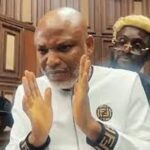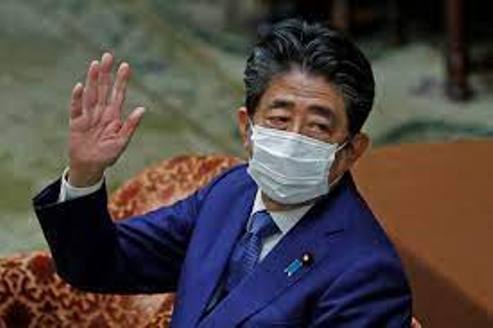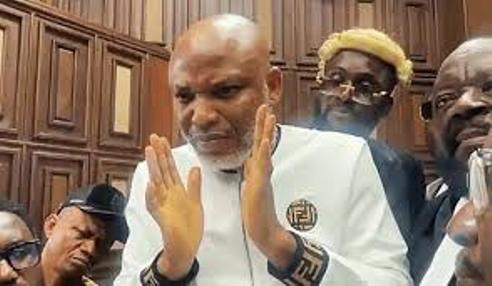LAGOS JULY 8TH (NEWSRANGERS)-The last time a current or former Japanese prime minister was shot and killed was 90 years ago. It’s a measure of just how rare and shocking gun violence is in the country, where ownership of firearms is strictly controlled.
The blast that felled Shinzo Abe on Friday — with a homemade shotgun, according to reports — happened while he was campaigning on behalf of the ruling Liberal Democratic Party in Nara, a city east of Osaka. Abe was giving a speech in front of a train station ahead of this weekend’s Upper House elections. The former leader was taken to a local hospital and later pronounced dead. He was 67.
“It was shocking, I’ve never thought such a catastrophe would happen in a countryside town,” said Yuki Ito, 42, who was shopping at a pharmacy nearby when Abe was shot. “It happened at a place by offices, banks and shopping malls. I got scared when I learned it was a gun crime.”
Shootings are uncommon in the island nation, but not unheard of. There were 10 incidents last year, leaving one person dead and four wounded, according to the National Policy Agency. For civilians, obtaining weapons — mainly rifles and shotguns for sport or hunting — requires an intensive licensing and background check process. Police are usually armed with handguns.
The suspect who shot Abe was identified by Japanese media as Tetsuya Yamagami, 41. He was immediately seized by the government’s Security Police, who are charged with protecting senior politicians and officials. As a former prime minister, Abe had a security detail, and at least one of them had a bulletproof shield. Television reports showed what appeared to be two tubes wrapped together with black tape on the ground, thought to be a crudely assembled weapon.
“This actually shows the extent that Japan gun laws are working,” said Daniel Foote, a professor at the University of Tokyo specializing in law and society. “Very few people have the ability to create such a weapon.”
The incident comes less than a week after a deadly mass shooting at a Fourth of July parade outside of Chicago, where Robert “Bobby” Crimo III, 21, was charged with seven counts of first-degree murder. There have been more than 300 mass-shooting incidents in the US in 2022, according to the Gun Violence Archive.
Tokyo had zero cases of gun-related incidents last year.
The estimated total number of guns held by civilians in Japan was 310,400 in 2019, or 0.25 per 100 people, the lowest level among the G-7 countries, according to GunPolicy.org. That’s compared with 393 million guns, or 120 per 100 people, in the US, and 3.2 million, or 5 per 100 people, in the UK.
Abe’s Assassination Will Scar Japan Forever: Gearoid Reidy
“In Japan, this type of shooting is extremely rare, which conversely, is why it was easy to execute,” said William Cleary, a criminal law professor at Hiroshima Shudo University. He said he canceled a class Friday after walking in and seeing the “absolutely grim” faces of his students. “Security was obviously too loose and this will prompt a tightening up of security, especially at open-air speeches, given we’re in the middle of elections.”
In 1932, Prime Minister Tsuyoshi Inukai was killed in office by Navy staff plotting to provoke war with the US (they also originally sought to kill Charlie Chaplin, who was visiting Japan at the time). The last time a Japanese politician was shot and murdered was in 2007, when the mayor of the southern city of Nagasaki was targeted by members of yakuza, or Japanese mafia, outside a station.
Abe’s maternal grandfather and former prime minister Nobusuke Kishi was also the target of an assassination attempt. In 1960, Kishi was attacked and stabbed during his final days in office by a man affiliated with right-wing groups. He survived.
Although best known for “Abenomics,” a plan to revive Japan’s economy through unprecedented monetary easing and regulatory reform, the country’s longest-serving prime minister also sought to boost defense spending and revise the pacifist constitution, seen as controversial steps within and outside Japan.
There’s another parallel between the two attacks on prime ministers, separated by almost a century. Yamagami, who shot and killed Abe on Friday, was a former Maritime Self-Defense Force member, according to local broadcaster FNN.
“This comes as a grave shock,” said Hiromichi Watanabe, a senior LDP member speaking at the party’s headquarters. “I can’t believe something like this could happen in Japan.”
(Updates with Abe’s death in second paragraph.)
Bloomberg Businessweek











